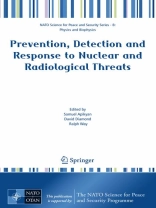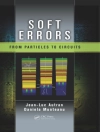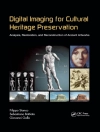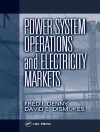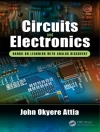Stemming from the NATO Advanced Research Workshop, this book asserts that no single institution or country possesses all the resources to effectively address radiological and nuclear threats. Moreover, the book asserts that fundamental scientific challenges must be overcome to achieve new and improved technologies. In response, the book sets forth research strategies that advance the ability to counter nuclear and radiological threats.
Innehållsförteckning
Preface.- Chapter 1: Prevention.- From cold war to international terrorism; N.C. Santamaria.- Nuclear Terrorism. An Overview – G. Velarde.- Prospects For Co-Operative Threat Reduction Beyond The Fsu; G. Kaser.- Perspectives On International Radiological Trafficking; R. A. Lindley et al.- Proliferation Resistance Features In Nuclear Reactor Designs For Small-Power Plants; B.A. Gabaraev, Yu.S. Cherepnin.- Integrated Border Management: R&D Activities At Jrc; V. Berthou et al.- Individual Protection Against Inhalation Of Long Living Radioactive Dust Due To An Uncontrolled Release; T. Streil et al.- Contributions Of Legislative, Regulatory And Institutional Infrastructures To Sustaining National Nuclear Security Regimes; P.A. Comella.- Identification, Assessment And Prevention Of Different Environmehntal Risk-Factors Impact, Including Radiation, On The Population Health; G. Ormotsadze.- Chapter 2: Detection.- Neutrinos, Dark Matter And Nuclear Detection; W.H. Goldstein et al.-Detection Of ’Dirty Bombs’ Using Nanosecond Neutron Analysis (Nna) Technique; A.V. Evsenin et al.- Ansi And Iec Standards For, And Evaluation Of Radiation Detection Instrumentation; P.J. Chiaro, Jr.- New Devices For The Detection And Identification Of Radioactive Sources; L.S. Quindos Poncela et al.- Perspectives Of High Pressure Xenon Gamma-Ray Spectrometers To Detect And Identify Radioactive And Fissile Materials; V.V. Dmitrenko et al.- Experimental Model Of The Device For Detection Of Nuclear Materials By Pulsed Photoneutron Technology; A. Bakalyarov et al.- Radioecological Monitoring To The South Caucasus’ Rivers As A Tool For Eharly Warning System; A. Nalbandyan, A. Saghatelyan.- Chapter 3: Response.- Calibration Of A Cloud Rise Model For A Rdd Scenario; I. Yaar, A. Sharon.- Application Of A Decision Support System In Nuclear And Radiological Emergency: Opportunities And Challenges; W. Raskob.-A 3d-Monte Carlo Based Dispersion Model For An Rdd Or A Nuclear Terror Scenario; A.Sharon et al.- Challenges In Responding To Incidents Involving The M alevolent Use Of Radiation; C. Rojas-Palma.- French Emergency Response In Case Of Dirty Bomb Threat T. Pelletier, F. Mariotte.- Psychological And Social Response To A Nuclear Terrorist Event; A.J. Baratta.- Cleanup And Site Restoration Strategy After A Radiological Terror Attack; F. Steinhaeusler.- Activity Estimation Of Gamma-Ray Emitting Sources Without The Preliminary Knowledge On A Shielding Design. Simulation And Experiment For Nai(Tl) Detector; S. Korneyev.-Assessment Of Radiological Risks And Possible Ecological And Economic Damages From Large-Scale Natural And Man-Induced Catastrophes In Ecology-Hazard Regions Of Central Asia And The Caucasus; A.N. Valyaev.- Results Of Implementation Of The State Program ’Radiation’ In Georgia; N. Vepkhvadze.- Index.-
